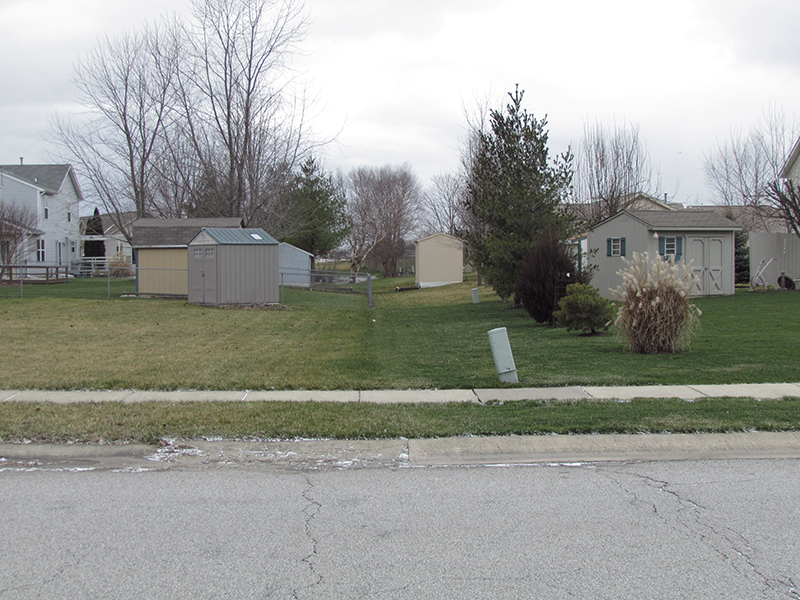Picture of the Week
November 15, 2022
Fall Fertilization of Home Lawns: Is it too late?
John Orick, Purdue Master Gardener State Coordinator
A healthy lawn requires supplemental nutrients delivered through fertilizer applications to maintain growth. Applying fertilizer at the appropriate time is critical to promoting a healthy lawn and maximizing the benefits of nutrients. Purdue turf specialists recommend that homeowners and turf managers apply 50-60% of the total annual nitrogen (delivered through lawn fertilizers) to cool-season turfgrasses (such as Kentucky bluegrass, fine fescues, tall fescue, perennial ryegrass, etc.) between late-summer and mid-fall (e.g. Labor Day through Halloween) to promote root growth, production and storage of carbohydrates, recovery from damage, green color, and turf plant density to compete with weeds (see photo). But, how late into the season is too late to fertilize a turf area?
During late-fall, homeowners and turf managers should be sure to apply products containing mostly a soluble nitrogen source to actively growing turf. Therefore, avoid fertilizing turf when the soil is frozen or turf is dormant due to drought or cold temperatures. On November 10, 2022, the soil temperature in turf areas near the Purdue Horticulture Building ranged from 50-60 degrees F. The forecast calls for temperatures in the Lafayette area to drop into the 40’s and even into the 30’s in the next week or so. As air temperatures drop so will soil temperatures. Plant growth slows when the soil temperature drops below 40 degrees F, which means turfgrass plants will likely not be able to effectively utilize nutrients applied through fertilizer applications.
Click image to enlarge
So, is it too late to fertilize turf? When planning a late fall fertilizer application, homeowners and turf managers in our region are encouraged to check for frozen soil, measure soil temperatures (when possible), and look at the weather forecast for temperature trends before making a decision to fertilize turf areas in late-fall. In general, a good rule of thumb is if Halloween has come and gone then put the fertilizer spreader away. But, if fertilizer is applied in November, Purdue Turfgrass Extension Specialists recommend reducing the rate of nitrogen applied and to be aware of the fact that late-fall applications of nitrogen fertilizer can cause excessive turf growth the following spring.
For more information on proper lawn fertilization, seeding, and other lawn care practices, visit www.turf.purdue.edu.
Resources:
Fertilizing Established Cool-season Lawns: Maximizing Turf Health with Environmentally Responsible Programs (AY-22-W), https://www.extension.purdue.edu/extmedia/AY/AY-22-W.pdf
Purdue Turf Fertilizer Calculator https://turf.purdue.edu/fertilizer-calculator/
Facts About Phosphorus and Lawns (AY-334-W) https://www.extension.purdue.edu/extmedia/AY/AY-334-W.pdf



